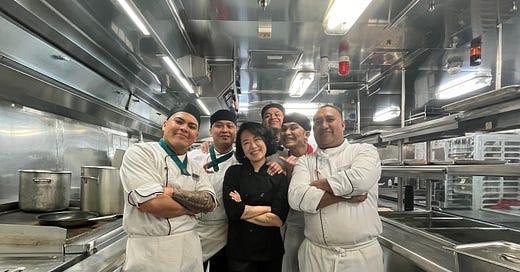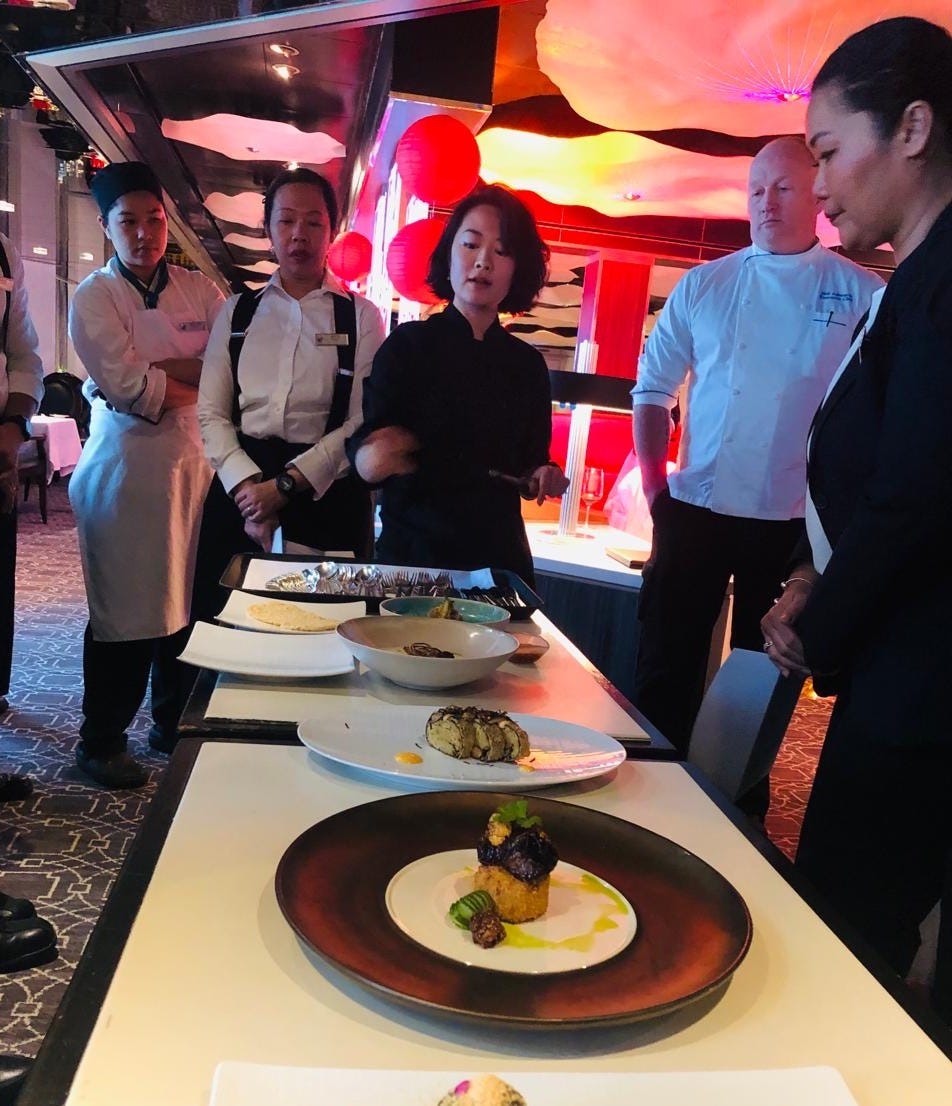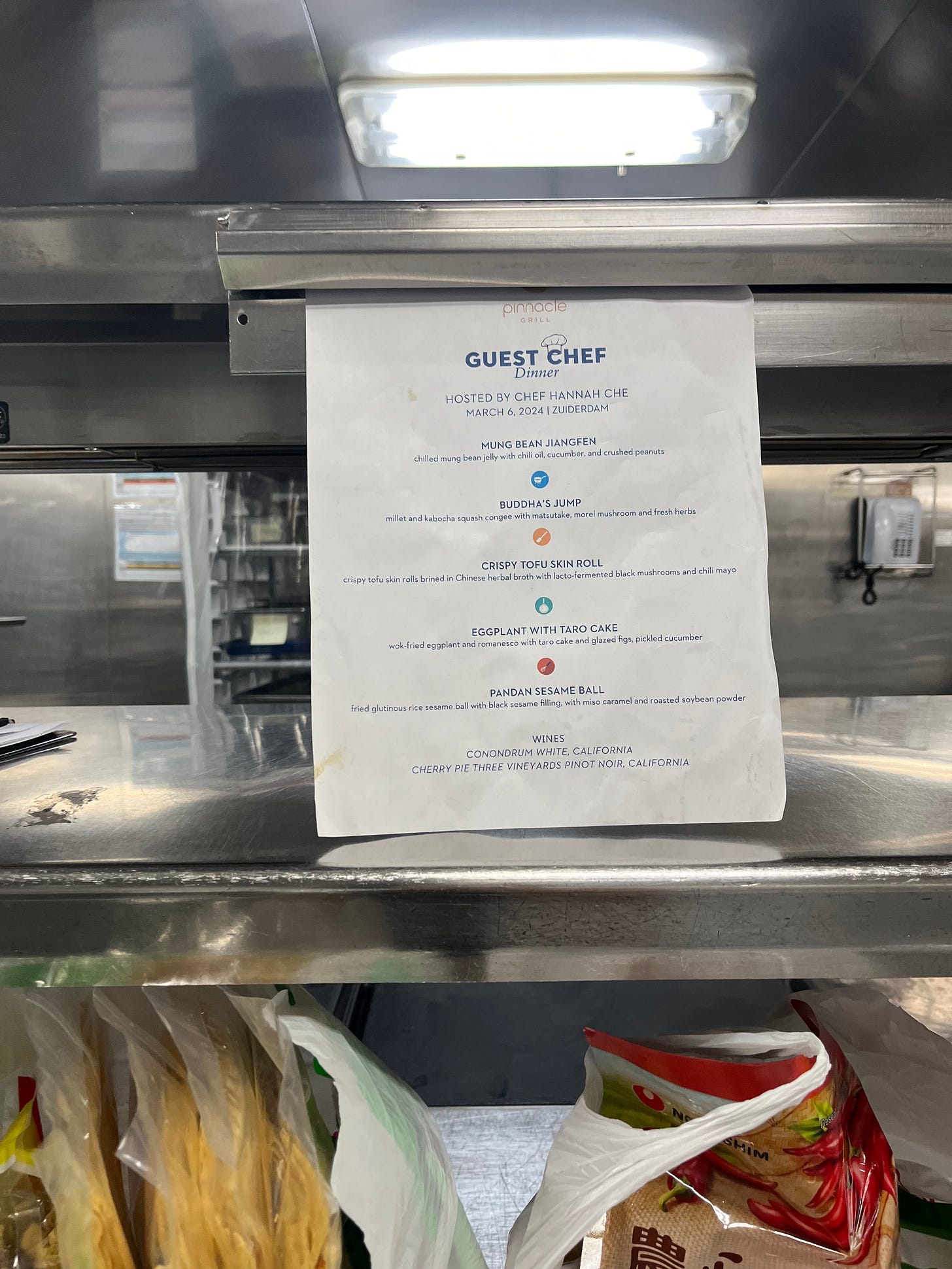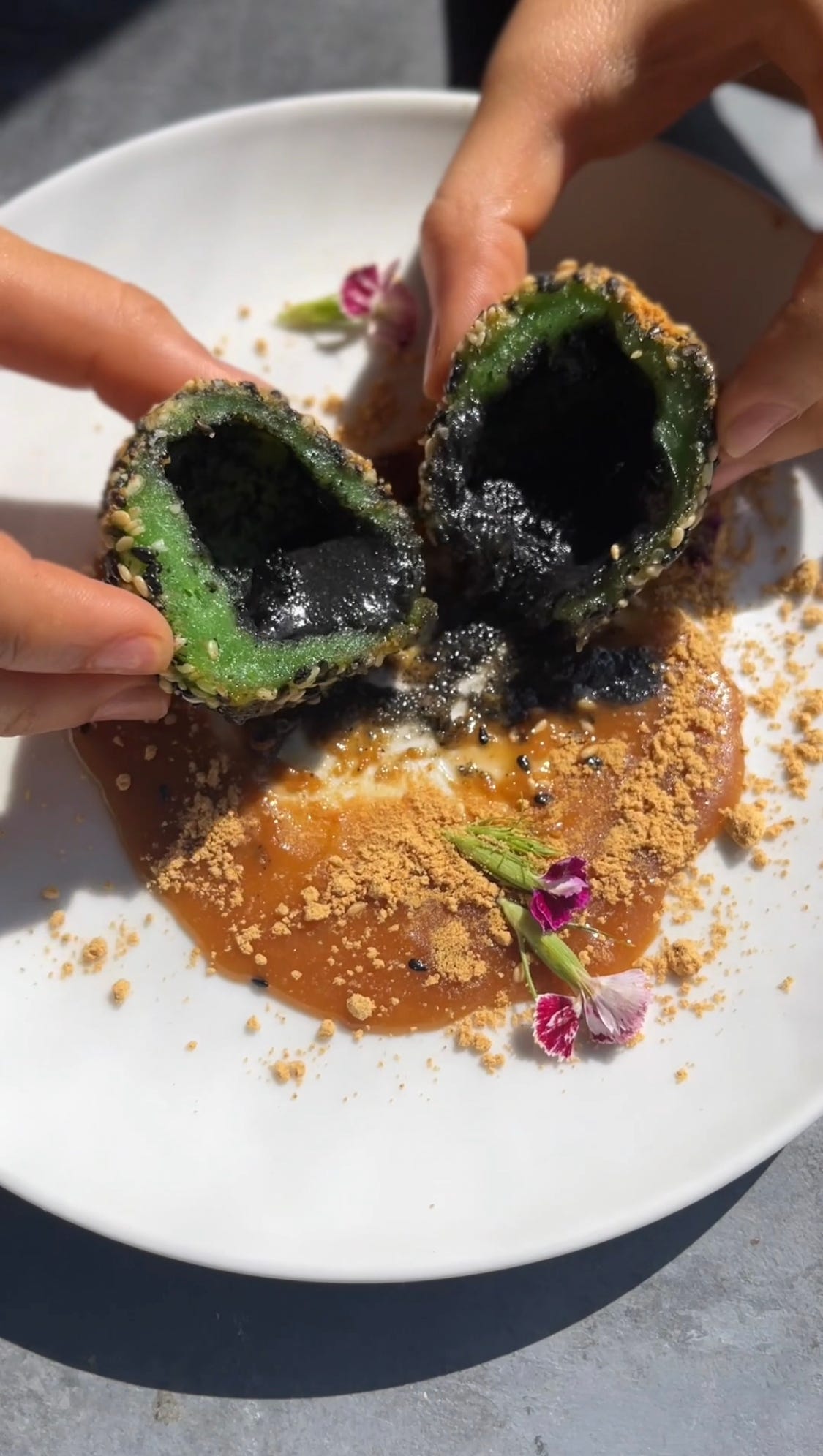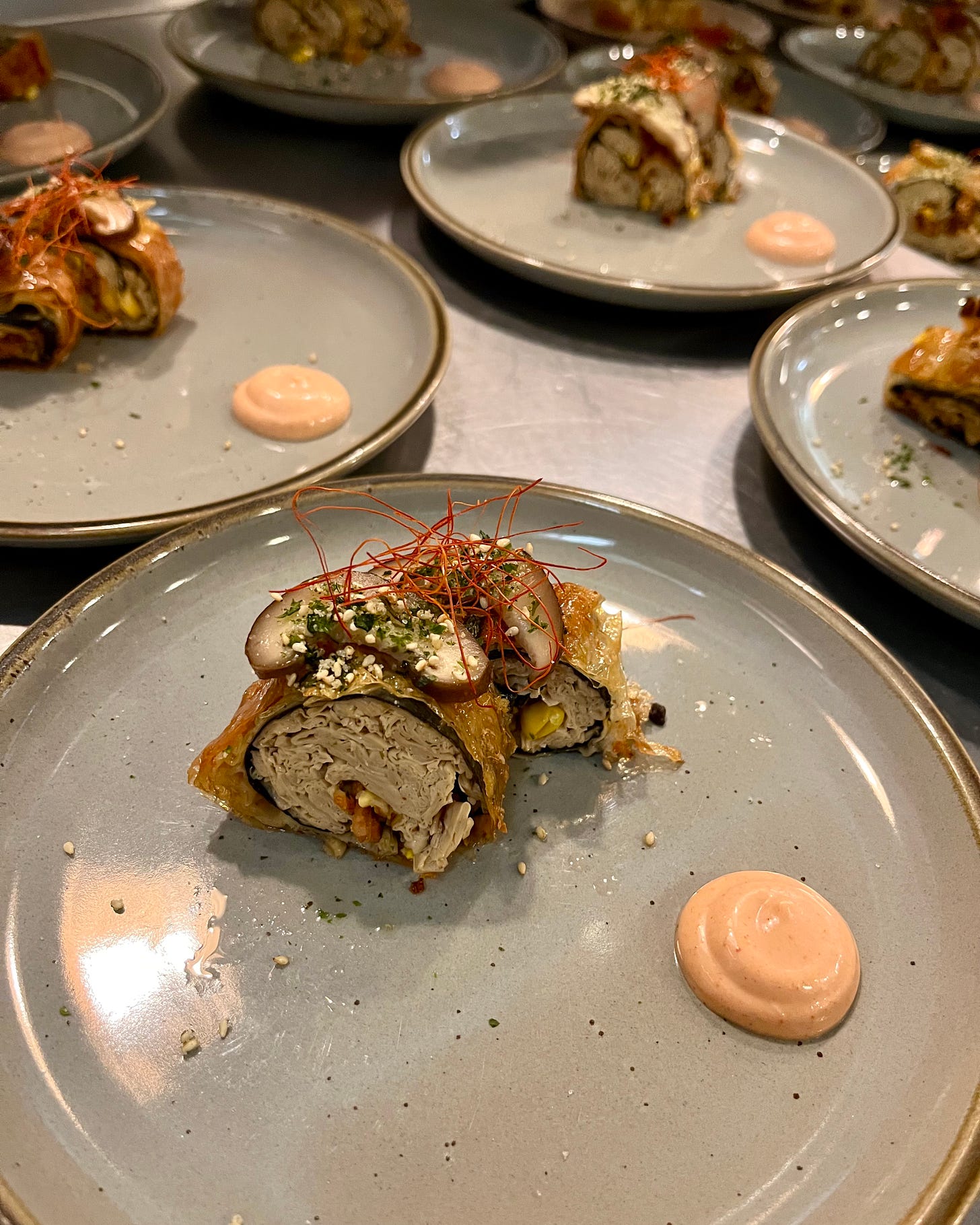I’m back on land! I had an incredible two weeks as Guest Chef on board the Holland Line’s Zuiderdam. After departing from Shanghai, the ship will continue on to Tianjin and Dalian, the next stops on its 125-day world voyage.
The scale of food production is as mind-boggling as you’d expect. Two entire decks or floors are dedicated to food storage. I still don’t know how people find anything. Executive Chef Neil Ashworth somehow keeps a running inventory in his head. “What do you need— dried apricots? Vegan mayonnaise? Rice vermicelli? Tamarind paste? We don’t have tofu, it’s too perishable. The box of shimeji mushrooms is on the top shelf of the second produce walk-in.”
A cruise ship is essentially a floating hotel. The number of people on board always fluctuates, but all guests have access to three meals on the ship, and their eating habits are predictable. Despite the illusion of limitless variety with the buffet line, the dining room, and the specialty restaurants and bars, all the food on board is produced out of one galley and one inventory. The menus can get repetitive, relying mostly on frozen proteins and dried goods like rice and pasta, as well as daily breads from the ship’s bakery. This is intended to minimize food spoilage and waste.
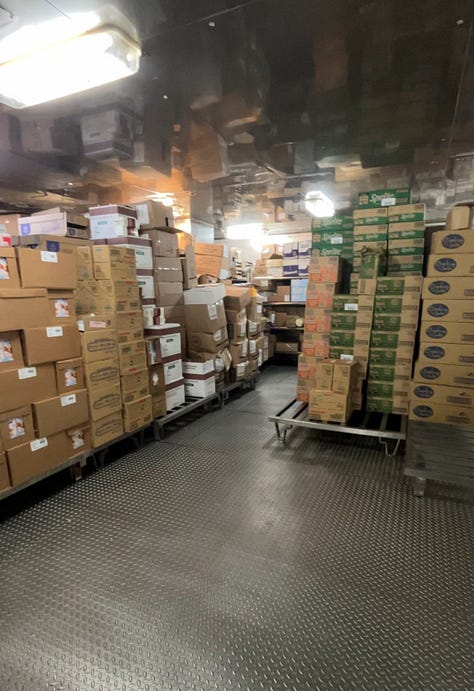
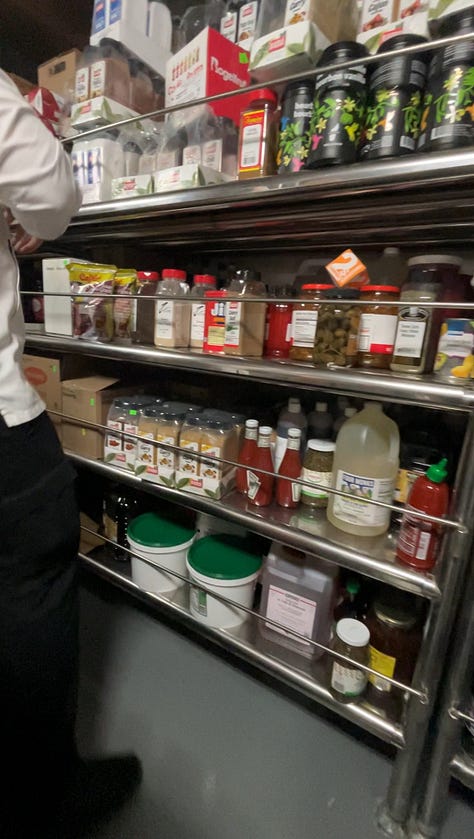
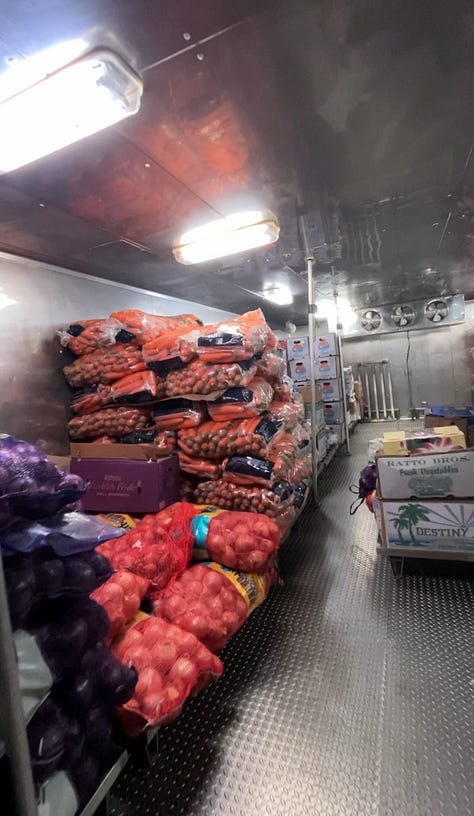
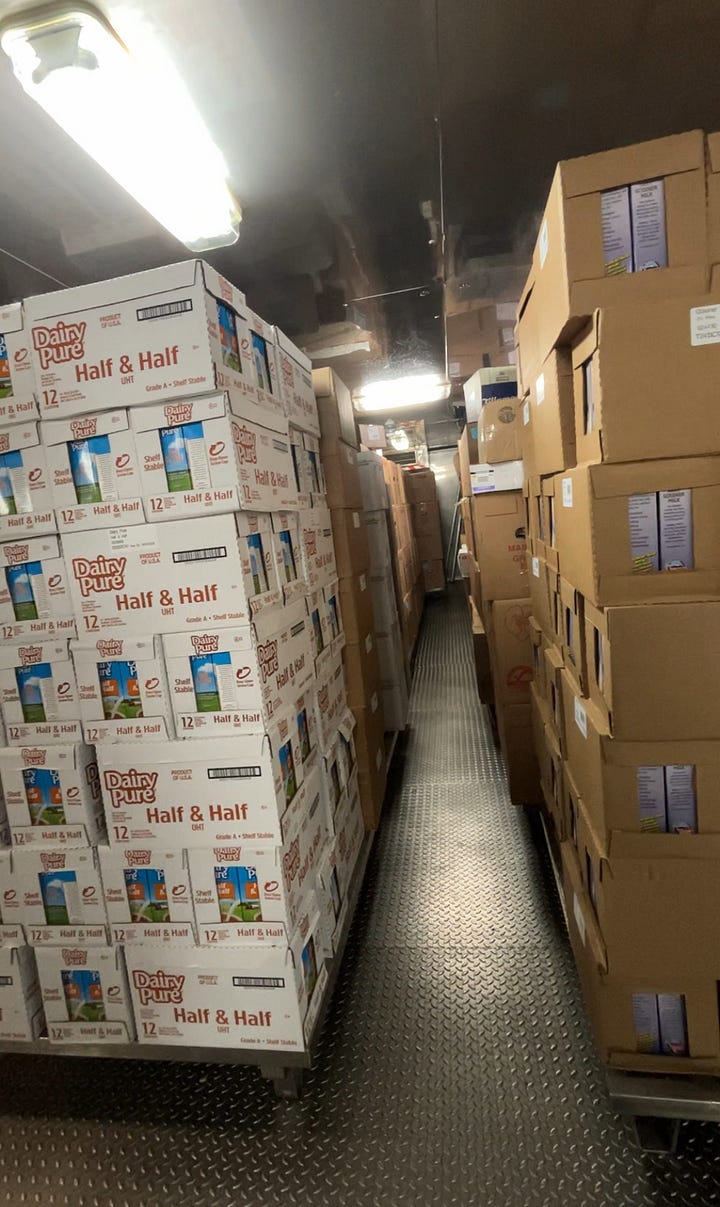
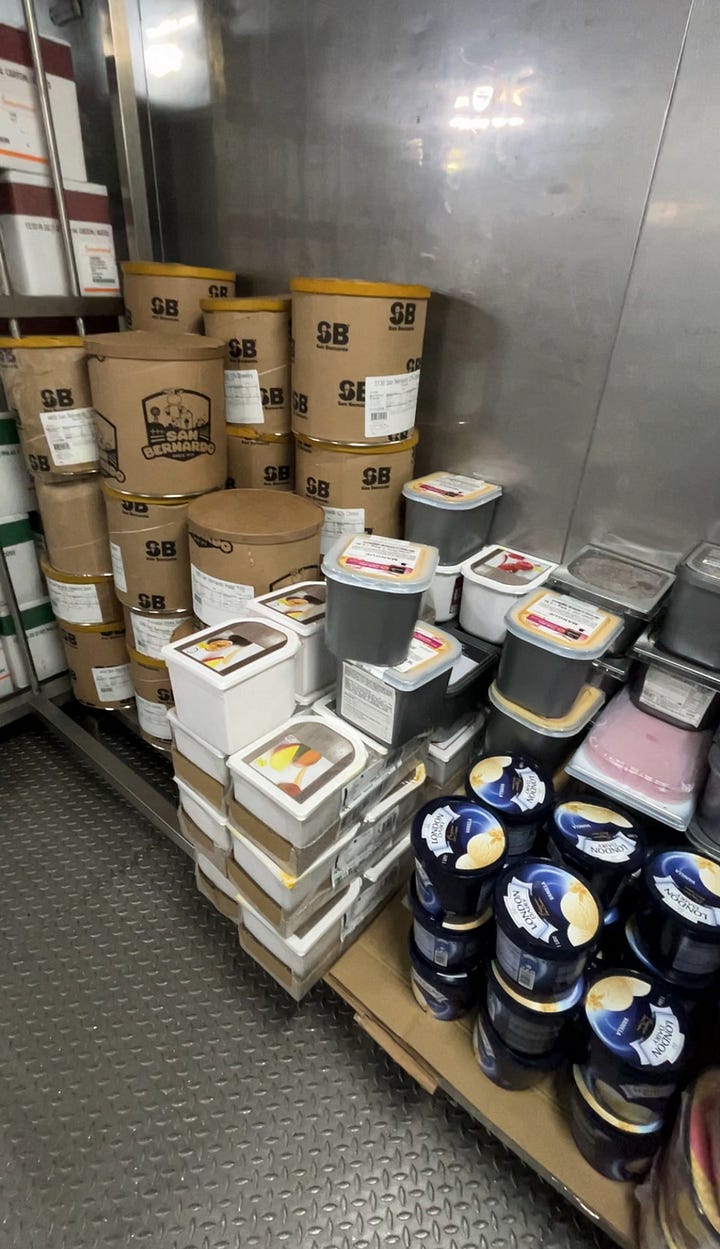
George Nurchandra, the ship’s food and beverage director, is responsible for “grocery shopping” for 1200 people. Cruise ships acquire a significant portion of its food at ports they visit, and George starts negotiating with the port brokers weeks before arrival. The sourcing is strategic: fresh vegetables and fruit are expensive in Japan, so he waits to restock produce when the ship gets to Hong Kong. Hard vegetables like potatoes, carrots, leeks and bell peppers last for months in storage, while soft vegetables keeps for two weeks at most, like salad greens, scallions, herbs, cucumbers and fruit, which he purchases in smaller quantities.
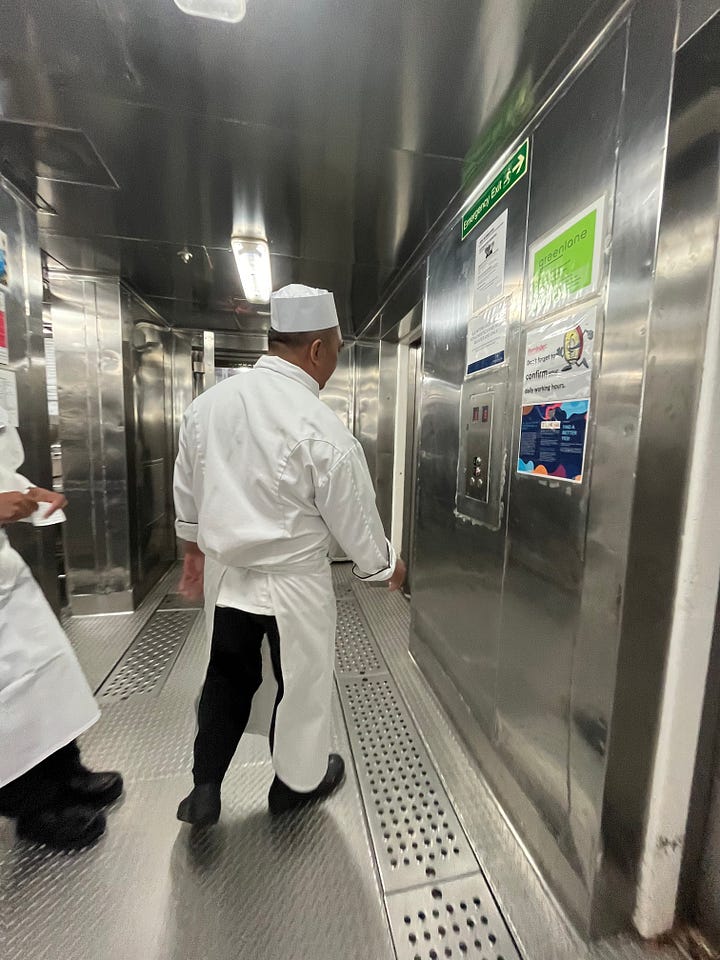
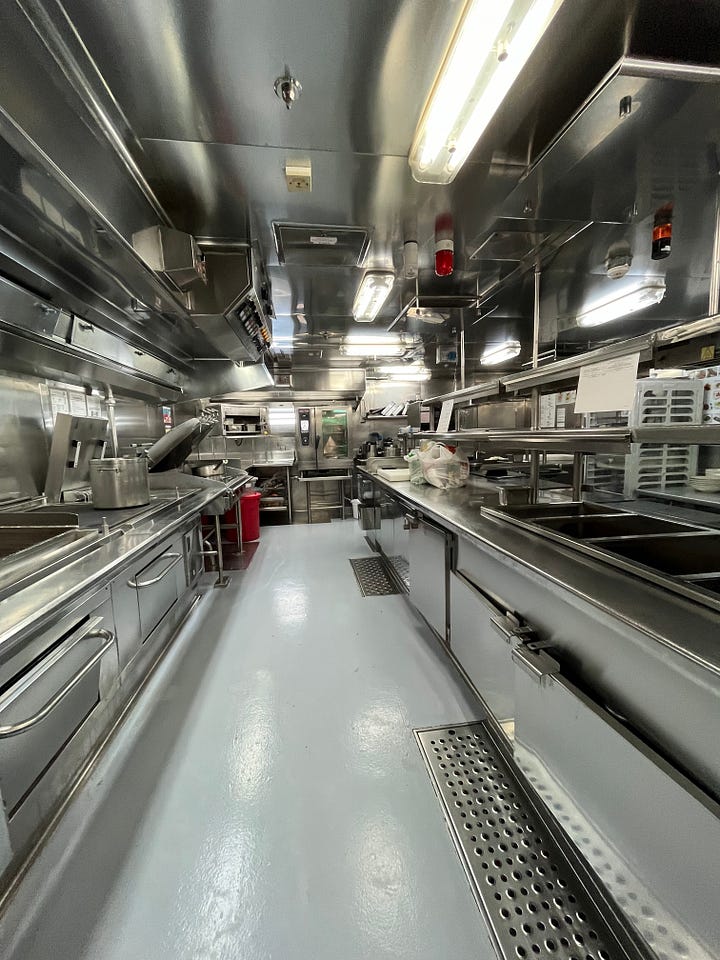
The average age on board was 72, and their tastes followed accordingly. (Cruises are for the newly wed or nearly dead, as the joke goes. Whenever I saw another young person I assumed they were staff, crew, musicians, or entertainers.) “We have to under-season everything,” Chef Neil said, “or the elderly will complain.” I found myself reaching for the salt shaker at every meal. I wish I’d brought a shaker of MSG.
Sometimes the ship shuddered and pitched forward, but other times it was so quiet you can hear the creak of the windows and the waves lapping the hull. Time felt suspended on the water— freed from chores and concerns on land, and disconnected from high-speed internet, it was easy to lose track of the days of the week. I started looking forward to mealtimes just to break up the monotony. I didn’t have any responsibilities the first week, so I spent as much of my time in Tokyo, Fukuoka, Kobe, and Osaka as possible.
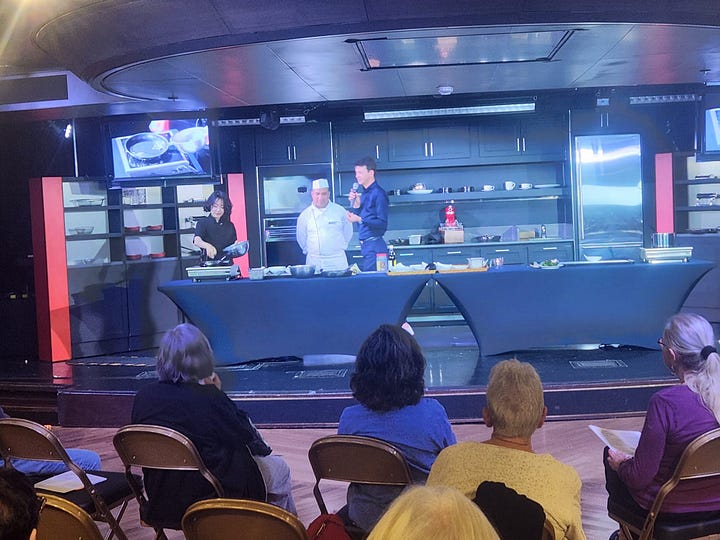
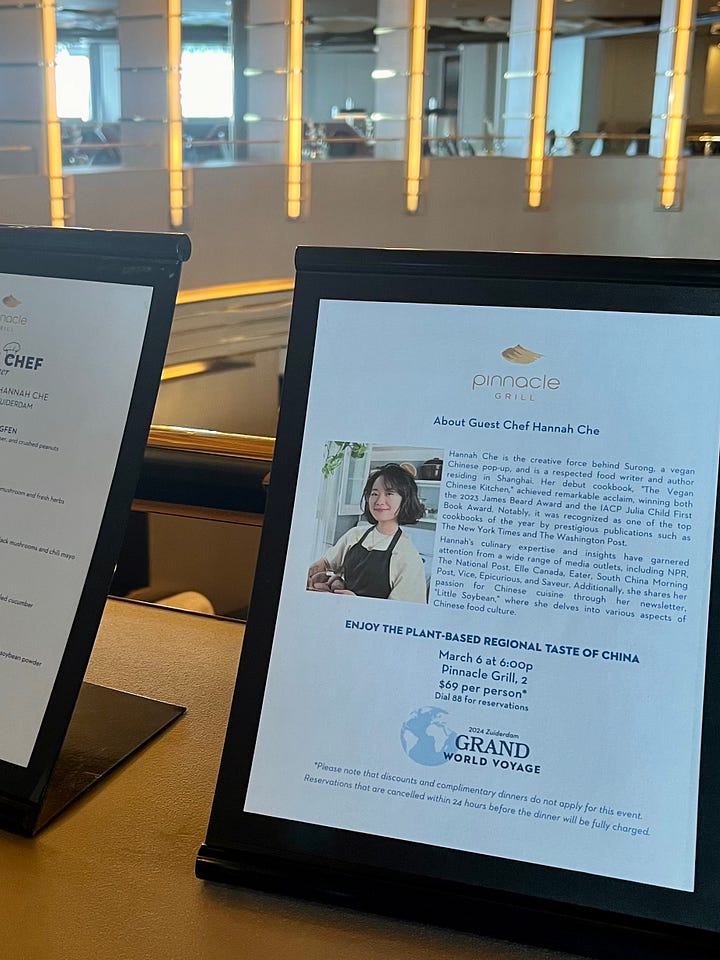
Five days before my pop-up I still didn’t have all my ingredients. George said the Japanese port broker had marked the cassia bark, Sichuan peppercorns, coconut cream, pandan extract, beancurd sheets and glutinous rice flour on my par sheet as unavailable. “I’ll look on shore,” I offered, and spent my second day in Tokyo crisscrossing Okubo and Ueno and the Ameyoko district on foot in a personal mission to prove the port broker wrong. Surprisingly, there really aren’t that many Chinese grocery stores in Tokyo. It wasn’t until Chinatown in Kobe that I got my beancurd sheets, in a Taiwanese shop behind a queue of Korean tourists eating fried sesame balls (jiandui) on skewers like dango.
I was about to make scallion pancakes when I learned we didn’t have scallions and cilantro on board. Last-minute ingredient runs are impossible when you’re in the middle of the East China Sea, you can’t just send someone to the grocery store. I considered using leeks but pivoted to shaobing (sesame flatbreads) instead, which I served as the bread course with a garlic-chili dip. The rest of the menu stayed consistent, sans scallions and cilantro. The Chinese in me was screaming but it all turned out fine.
Note to self: do not try to portion anything using a scale on the ocean. Whenever we hit a rough swell, the reading would go beserk, flickering from zero to -14 to 7 to 22 grams like a malfunctioning geiger counter. Unlike a car, which usually moves horizontally at a steady velocity, the ship was also accelerating up and down.
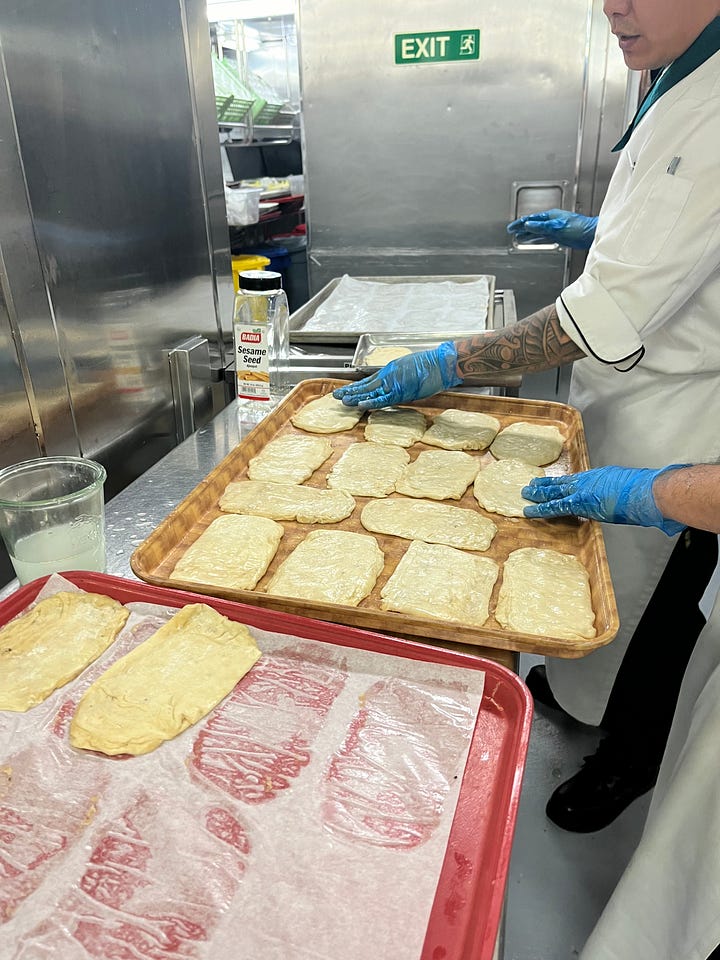
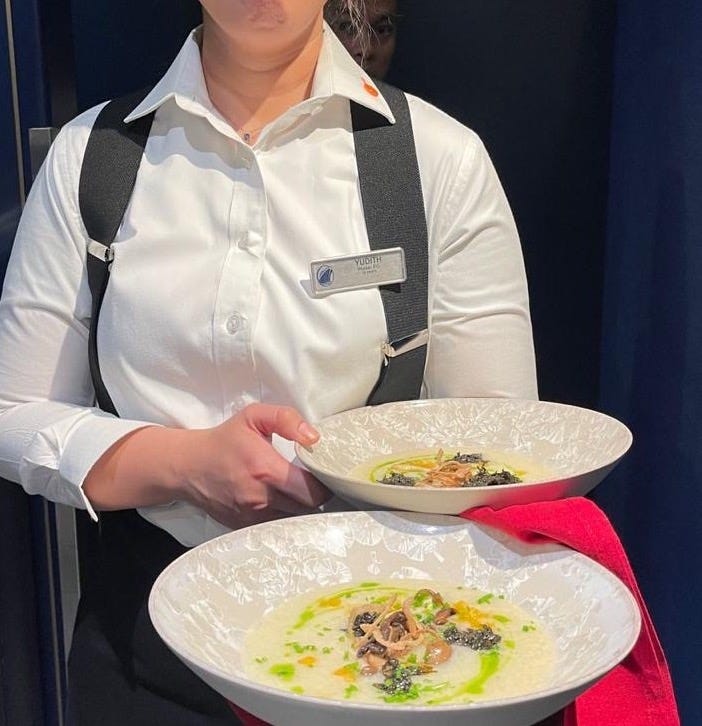
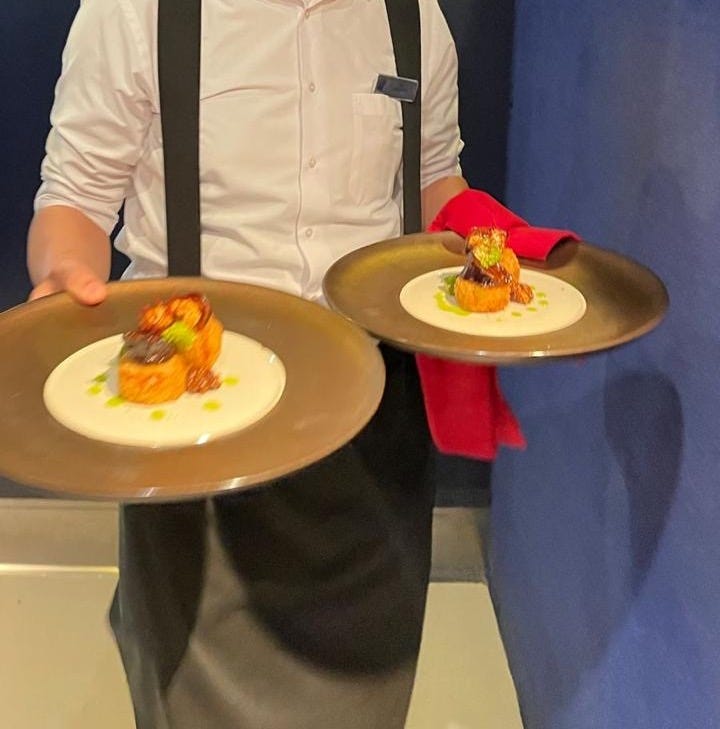
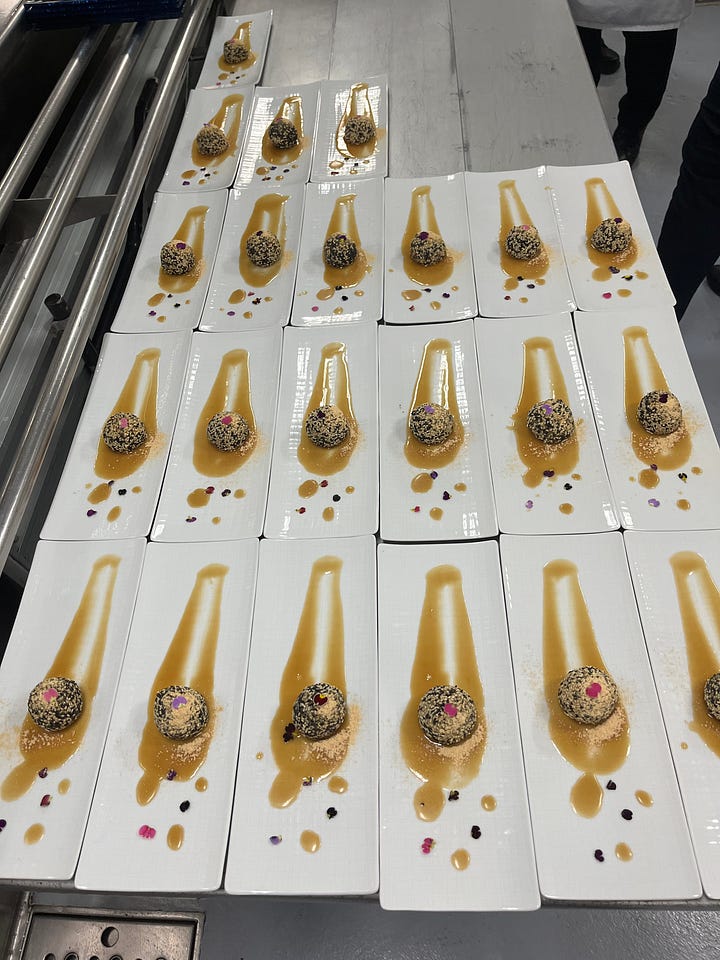
For my menu, I picked favorites from my pop-ups in Portland that I felt confident reproducing on the ship— I could probably prep them in my sleep. I plan on retiring these dishes soon, to be honest.
But the sesame balls are too good not to share the recipe. I combined three of my favorite flavors—pandan, black sesame, and miso— in a dessert showcasing jiandui. The miso caramel is made by reducing coconut cream with sugar until it’s sticky and reluctant, deep in color with a lovely saltiness. It’s delicious drizzled on ice cream.

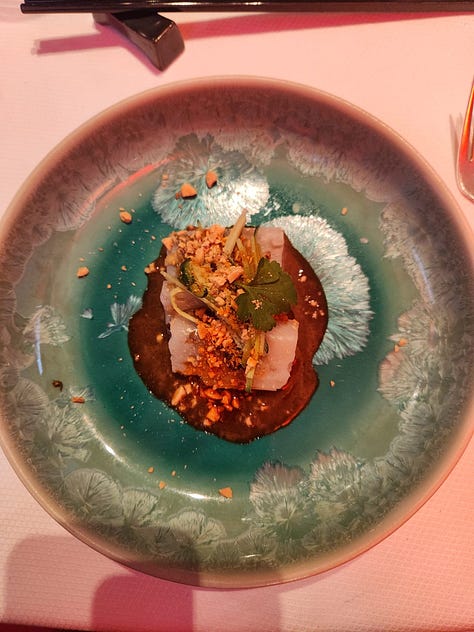
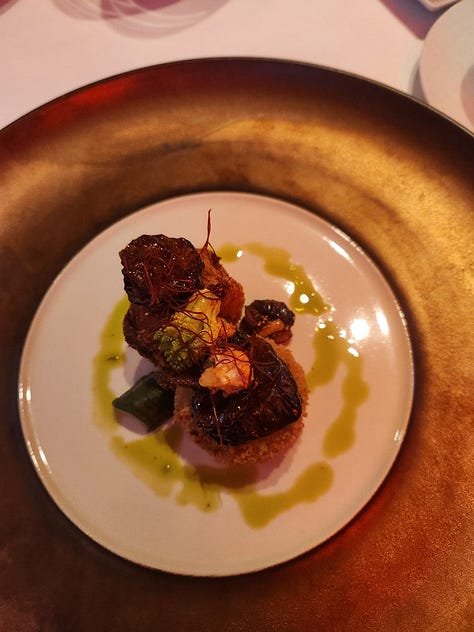
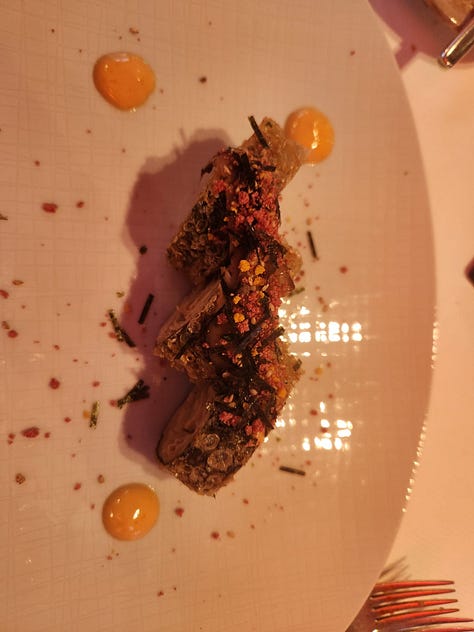
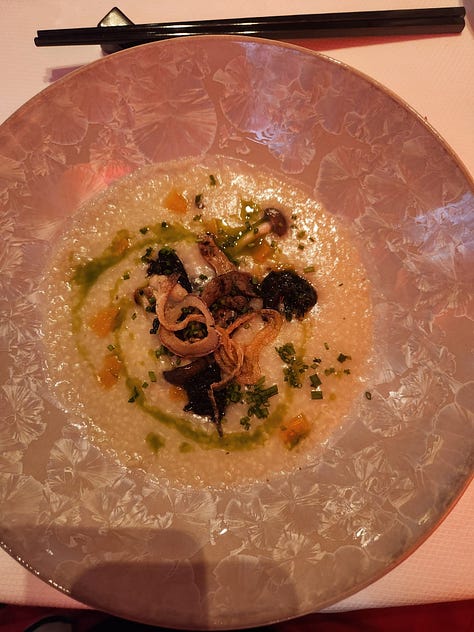
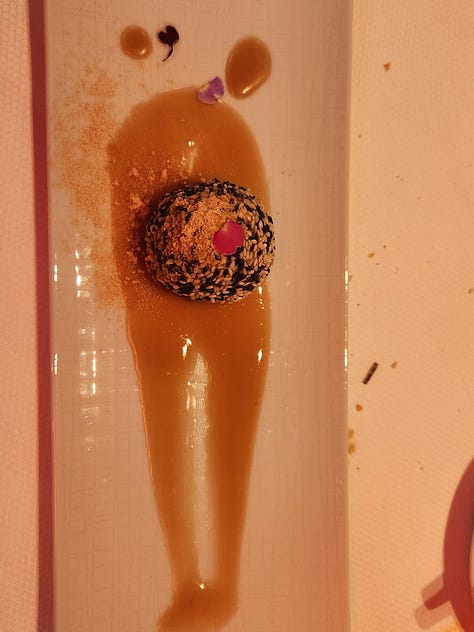
Paid subscribers also get the recipe for the crispy tofu skin rolls.
PANDAN SESAME BALLS WITH MISO CARAMEL AND ROASTED SOYBEAN POWDER
MAKES 12-13 balls (SERVES 12)
For the Black Sesame Filling:
95g black sesame seeds
70g golden sugar or granulated cane sugar
33g refined coconut oil, melted
½ teaspoon kosher salt
In a dry pan, toast the sesame seeds over low heat until they start to pop and are fragrant. Allow to cool slightly. Transfer to a Vitamix with the sugar. Blend steadily on slow until a fine ground forms and the mixture starts to clump. Transfer to a bowl, add the melted coconut oil and salt and stir until smooth. Transfer to a baking pan and freeze overnight to harden.
Thaw the filling for 15 minutes. Shape into 14-15 gram balls. Place in a single layer on a lined baking sheet and keep frozen until use.
For the Mochi Dough:
3 cups water
230g sweet rice flour or Mochiko flour, divided into 205g and 25g
65g golden or cane sugar
½ teaspoon pandan extract
In a medium pot, bring the water to a boil. Combine 205g glutinous rice flour and sugar in the mixer bowl base. Place the additional 25g (3tbsp) rice flour into a small bowl, this will be for the tempered ball. Add 1 ½ Tbsp boiling water to this separate flour. Stir and squeeze into a rough ball, then knead until smooth.
Boil the ball in the pot until glossy and floating, about 4-5 minutes. Remove from the pot with a slotted spoon. Break the ball apart and place it in the mixing bowl with the remaining rice flour and sugar. Mix on low for 1 min.
Add 145 grams boiling water. Mix low on 1 min, then med-high for 2 minutes, until the dough is smooth and sticky. Add the pandan extract and mix on high again until desired green color is reached. Cover tightly and rest 1 hour in the fridge. (You can also refrigerate overnight. ) Portion into 30g balls. Always keep the mochi covered so it doesn’t dry out.
Wet your hands and flatten each portion into a disc. Place a frozen ball of black sesame filling in the center and pull the sides upward to enclose, and smooth/roll gently to seal. Dip in a plate of black and white toasted sesame seeds, rolling until completely coated. Freeze the finished balls overnight.
For pickup, heat the oil to 350F (177C). Drop in the frozen ball and fry for 7-8 minutes until it bobs and floats to the surface. Remove and drain on paper towels. Serve warm.
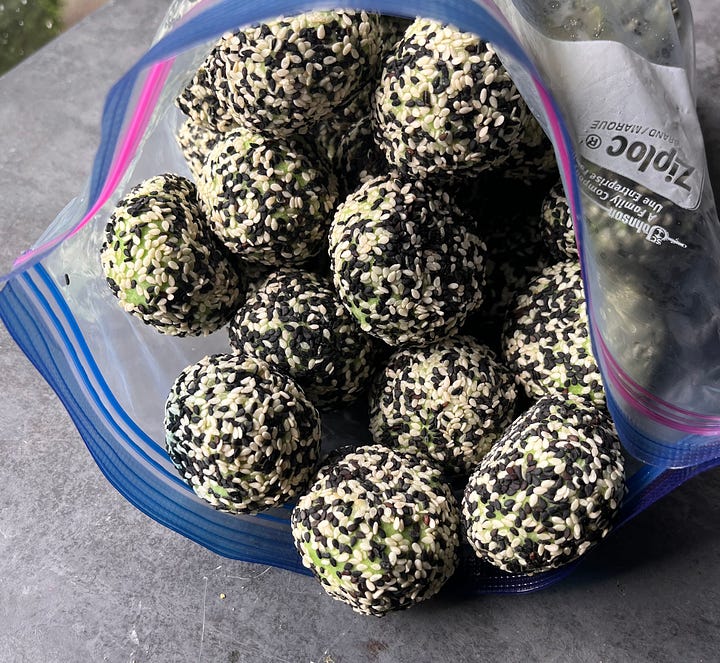
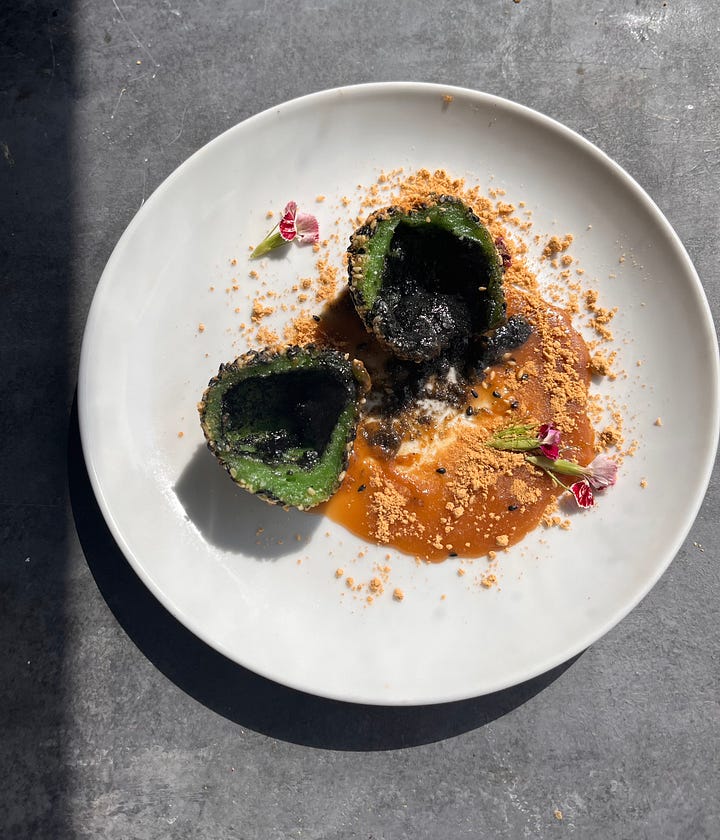
Vegan Miso Caramel
MAKES 1 QUART
1 box (1L, 33.8 oz) AroyD coconut cream
4 cups golden sugar or brown sugar
3 - 5 tablespoons miso paste, either light or red
In a saucepan, combine the coconut cream and sugar and bring to a simmer, whisking to dissolve the sugar. Reduce the heat to low and continue to cook for 30-45 minutes, stirring occasionally, until the mixture has reduced to a glossy caramel syrup and coats the back of a spoon.
Add the miso paste to taste and whisk until smooth.
The caramel will thicken in the fridge; heat it to bring back to a pourable/drizzly consistency.
For serving:
Roasted soybean powder (kinako)
Edible flower petals for garnish
Spoon the miso caramel on the bottom of plate. Place the fried sesame ball on top, and add a generous tap of roasted soybean powder. Garnish with flower petals and serve.
CRISPY TOFU SKIN ROLLS WITH FERMENTED SHIITAKE MUSHROOMS AND CHILI MAYO
Makes 2 rolls - SERVES 6
For the lacto-fermented shiitake mushrooms (PREPARE IN ADVANCE):


